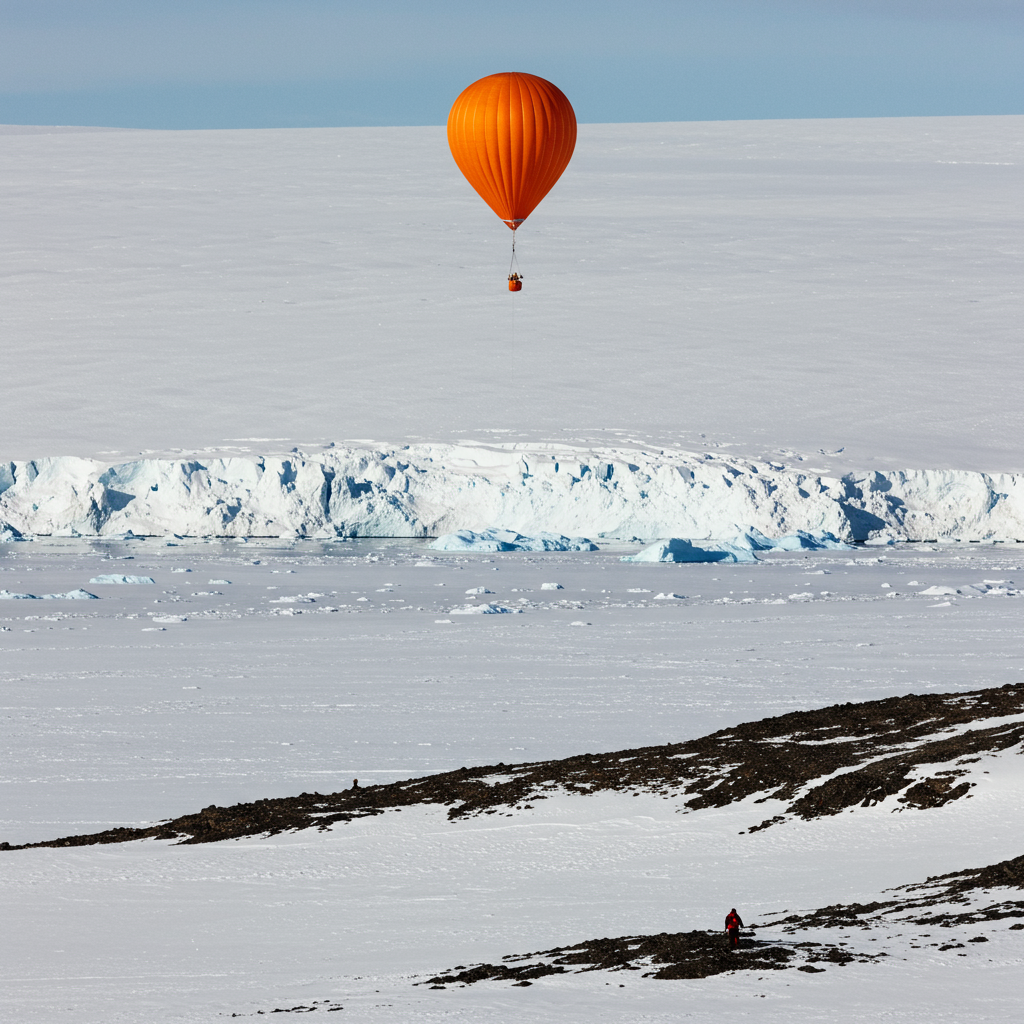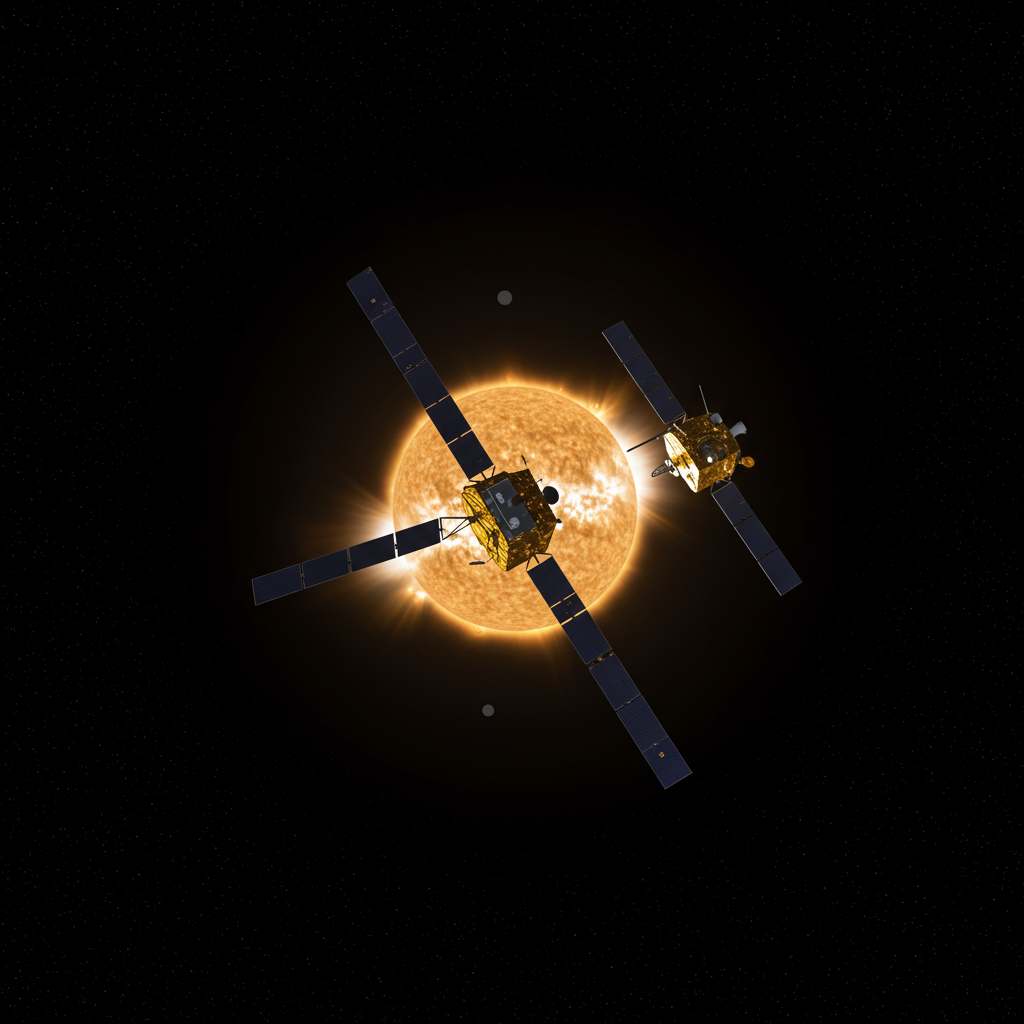Scientists operating a balloon-borne experiment high above Antarctica have detected bizarre radio signals originating from beneath the continent’s vast ice sheet. These unexpected pulses defy current particle physics understanding, presenting one of science’s most intriguing recent mysteries.
The discovery challenges established models of how particles interact and suggests the possibility of new physics at play or perhaps an unexplored environmental phenomenon unique to the Antarctic ice.
The ANITA Experiment
The perplexing signals were captured by the Antarctic Impulsive Transient Antenna (ANITA) experiment. ANITA uses sensitive instruments suspended from a high-altitude balloon flying approximately 40 kilometers (29 miles) above the desolate, radio-quiet landscape of Antarctica.
The choice of Antarctica is crucial due to its minimal radio interference, providing a clear environment for detecting faint cosmic signals. ANITA’s primary mission is to detect fleeting radio waves produced when high-energy cosmic rays or elusive particles like neutrinos interact with the atmosphere or the ice below. The goal is to gain insight into distant cosmic events by analyzing these faint signals.
The Unexplained Signals Beneath the Ice
But ANITA captured something far more unusual than expected cosmic interactions. Instead of signals arriving from above, as is typical for cosmic phenomena, these mysterious pulses appeared to come from below the ice.
Researchers, including a team from Penn State led by Associate Professor Stephanie Wissel, were baffled by the orientation of these signals. They were detected at surprisingly steep angles, calculated to originate roughly 30 degrees below the surface of the ice.
Why This Is Baffling:
Deep Trajectory: According to established physics, radio waves attempting to traverse thousands of kilometers of dense ice and rock at such a downward-then-upward trajectory should be absorbed and undetectable.
Unexpected Direction: Cosmic particles or neutrinos interacting near the surface would typically produce signals arriving from above or reflecting off the ice, not emerging from deep within the ice or the ground beneath it at these angles.
“The radio waves that we detected were at really steep angles, like 30 degrees below the surface of the ice,” said Stephanie Wissel.
Ruling Out Known Explanations
ANITA is specifically designed to look for signals from high-energy cosmic neutrinos interacting with the ice – events that produce detectable radio emissions. However, these anomalous signals did not match the expected signature of such interactions.
To rule out known phenomena, the scientists rigorously analyzed data from multiple ANITA flights. They compared the signals against extensive mathematical models and simulations of cosmic rays and known atmospheric events. This analysis aimed to filter out background noise and eliminate known sources of radio pulses.
Crucially, they cross-referenced their findings with data from other major, independent particle detectors operating in the region, such as the IceCube Experiment and the Pierre Auger Observatory. These other experiments, also designed to spot high-energy particles, registered nothing that could explain the strange upward-coming pulses detected by ANITA.
This rigorous process led the research team, who published their findings in the journal Physical Review Letters, to the baffling conclusion: the signals are “anomalous” and “most likely not representing neutrinos,” as stated by Dr. Wissel. They simply don’t fit within the standard picture of particle physics or any known astrophysical source.
The Mystery Deepens
So, what is causing these enigmatic signals emerging from deep beneath the Antarctic ice? Scientists currently have no definitive answer. The mystery has fueled speculation about potential explanations that push the boundaries of known physics.
New Particles or Interactions? The signals could be evidence of a new, unidentified type of particle or a previously undiscovered particle interaction that can traverse vast distances through dense matter without being absorbed.
A Hint of Dark Matter? While highly speculative, some theories suggest a connection to dark matter, the mysterious substance thought to make up a large portion of the universe’s mass. However, the lack of corroborating evidence from other detectors makes this and other particle physics theories difficult to confirm at this stage.
- Unknown Environmental Effects? Penn State’s Dr. Wissel also considers possibilities like unusual radio propagation effects occurring near the ice or horizon that are not yet fully understood, though initial explorations haven’t yielded a full explanation either.
- www.psu.edu
- www.foxnews.com
- thedebrief.org
- www.aol.com
- indiandefencereview.com
“It’s an interesting problem because we still don’t actually have an explanation for what those anomalies are,” Wissel commented. “Right now, it’s one of these long-standing mysteries.”
The Search for Answers Continues
The perplexing discovery was, in a sense, a “lucky accident” that occurred while the team was focused on neutrino detection. The search for answers continues, highlighting the limitations of current particle physics models in explaining these unique observations.
Penn State has been involved in this cutting-edge neutrino research for nearly a decade and is now part of a team designing the next generation detector: PUEO. This new, larger, and more sensitive instrument is intended to capture more of these elusive events and potentially shed light on their origin.
“In principle, we should pick up more anomalies,” Wissel said, expressing hope that PUEO will finally help scientists understand the source of these bizarre pulses, or perhaps lead to the confirmed detection of high-energy neutrinos from the edge of the observable universe, both of which would be groundbreaking scientific discoveries.
For now, the strange radio signals emerging from deep beneath the Antarctic ice remain a captivating puzzle, hinting that our understanding of the universe, and perhaps even the very ground beneath us, still holds profound surprises.




